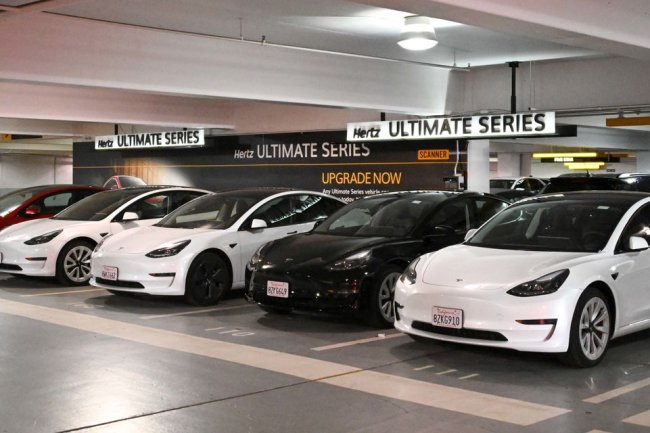$50 or $500? When Do We Tell Our Partner What We’ve Spent?
Cap on purchases reduces conflict and preserves financial autonomy in a relationship Illustration by Jon Krause Illustration by Jon Krause By Julia Carpenter Updated July 21, 2023 3:58 pm ET How much does your partner spend before you hit the panic button? Is it $100 or $1,000? Some couples say they have found a way to cut through the conflict around money: They set a spending rule. Either partner can buy whatever he or she wants without discussing the purchase first, as long as the final price falls under a previously agreed-upon threshold. Couples have felt the sting of restricted budgets and the fatigue of continued economic uncertainty, so staying on the same financial page can feel harder


How much does your partner spend before you hit the panic button? Is it $100 or $1,000?
Some couples say they have found a way to cut through the conflict around money: They set a spending rule. Either partner can buy whatever he or she wants without discussing the purchase first, as long as the final price falls under a previously agreed-upon threshold.
Couples have felt the sting of restricted budgets and the fatigue of continued economic uncertainty, so staying on the same financial page can feel harder than ever. Yet couples shy away from money conversations, seeing them as triggers of marital strife. But if partners can agree on money—how to spend it, how to save it and how to value it—they are better able to envision a shared financial future.
Married couples hold four times as much wealth as unmarried partners who live together, according to data from the Federal Reserve Bank of St. Louis. These couples are more likely to combine their finances and work together to achieve financial goals, researchers say, leading to greater overall wealth and relationship satisfaction.
Unmarried partners could also benefit from this no-questions-asked rule. A spending cap might sound freeing to some and scary to others, said Megan McCoy, assistant professor at Kansas State University’s department of personal financial planning. But she said she has seen couples use it to minimize discord, streamline money discussions and maintain a sense of individual autonomy in household finances.
By agreeing on a spending rule, where there are no questions asked under the threshold, couples are making “that line between secrecy and privacy more clear, which is beautiful,” she said.
“This trick of saying, ‘Here’s the amount we talk about or not,’ is saying to your partner, ‘We have these other shared financial goals, so you can have these little splurges.’”
Same money team
Anne Sophie Hurst, a 50-year-old human-resources executive based in Copenhagen, and her husband, James Hurst, first set a spending limit after they got married 12 years ago. After combining their finances, they agreed to check in with each before either would spend more than $500, be it on airplane tickets or a personal item. As the Hursts made more money over the years and had children, they raised the limit to $1,000.
“It felt like something we could both stomach. Even if I completely disagreed with something, if he spent $999 on it, he knows I’m going to be OK with it,” she said.
The Hursts had to re-evaluate the rule once they became parents. While the agreed-upon threshold had previously freed her to splurge on open-toe shoes and James to shop for parts as he fixed up his classic car, they had to reassess how paying for children’s camps, lawn mowers and household art worked with their spending limit.
“At the end of the day, it’s the Hurst family business,” she said. “We have always thought about it as our family business we’re running, and in this case, he’s the CFO and I’m the CEO, which I call chief entertainment officer.’”
What’s your number?
This approach to managing finances in a relationship gives each person some autonomy, said Christine Luken, a financial coach based in Cincinnati. “It takes a lot of the fight out of it,” she said of money discussions.
But finding a spending limit that works for an individual couple is more art than science, McCoy said. The number should fit within your financial plan and feel reasonable to both partners, but talking along the way also allows for each person to build the cap into their daily lives and spending habits.
Start by reviewing the existing household budget, including all purchases from both partners. Then, after each person comes up with a number—be it $50, $100 or $1,000—the partners could compare the proposed caps side by side: How similar are the two numbers? Why are they so far apart? What could bring them closer?
“Use that as a conversation about expectations and what that means,” McCoy said. “Maybe one person is more fearful about money or in a scarcity mind-set, and the other person has more goals they haven’t shared with their partner—this is the time to see that.”
Reality check

Emily Luk’s fiancé wanted to surprise her with an aerial silk rig, but because it exceeded the $1,000 spending cap they stick to, he checked with her first.
Photo: Channing Allen
Earlier this year, Emily Luk, a 29-year-old San Francisco resident, and
Channing Allen, her 33-year-old fiancé, launched an investment platform for couples. When they first began combining their finances, they agreed on a $1,000 individual spending limit.“Both of us managed our own investments and each of us had our own lives for the better part of 10 years before we started merging finances,” Luk said. “So we were used to a certain amount of autonomy.”
Luk said the spending rule she and Allen share also functions as a sanity check.
Last year, Allen wanted to surprise Luk with a lavish birthday gift: a piece of suspension equipment for aerial yoga and acrobatics. But once he realized the total price clocked in at more than $1,000, he decided ruining the surprise was worth checking in with Luk.
“I wanted to make sure we were aligned,” Allen said. “And doing that served us well.”
Write to Julia Carpenter at [email protected]
What's Your Reaction?













